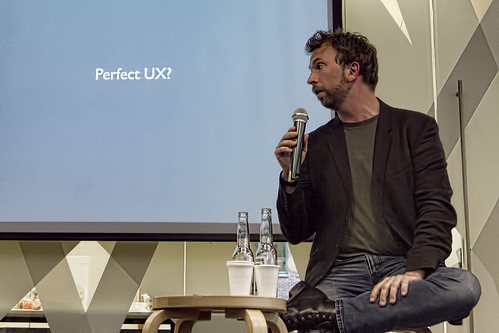The trouble with context
At the Information Architecture Summit in Baltimore, I’ve just had the pleasure of a full day with Karen McGrane, considering content strategies for mobile which of course isn’t content strategies for mobile at all but content strategies for content which might somehow be consumed by 76% of us using some kind of hand-held device or other as the primary device that we use to consume that stuff because that’s our preference notwithstanding the fact that indeed for some 40% or other of the 76% or other that preference is actually the only option because using a smartphone to access the internet is the only way to do it and don’t forget that an ever-growing percentage or other of the new natives in the 18-24 age range just actually don’t see why you’d want to access the internet on anything other than your smartphone because, like, using a proper computer is what your dad does in the corner of the home office and I should know because that dad is me.
Which is to say, don’t get led astray by implied contexts of physical devices when considering the user needs and behaviours in relation to the structure and organisation of the content they may consume. There is no specific mobile use case that defines a content strategy when considering your options for creating a compelling user experience. There is only content. And the structure of that content. And the user experience of interacting with that content is what defines the context of use. It is a misappropriation of the term to hypothesise scenarios based on context, since context can only ever be undefined up to the point at which the manifestation of the moment of interaction occurs.
We can, of course, be pragmatic and facilitate a conversation about context by making some assumptions about likely renditions of scenes where actors follow a script to bring to life some awkwardly cinematic versions of potentially reasonably representative portrayals of the personification of a user need. These are the ‘what if’ propositions that at least enable us to align our thought gazelles behind a weirdly myopic vision of a real life event. It enables us to say ‘that might happen. what might we consider based on the knowledge acquired from that?’ And actually, we can write pretty good scripts. And we can develop pretty good personas.
But we’re just making it up. And we bring to that imagination every subtle or not so subtle nuance of our own limited experiences and assumptions to the point where we can imagine a whole sundance festival of what ifs but if the only person in the audience for the special screening of ‘a series of what ifs in the style of a seemingly disconnected robert altman style parable that ultimately defines the human experiences but coincidentally demonstrates the likely context of use for you the user’ just sits there slowly shaking their head muttering something like ‘they don’t understand. they don’t understand’ then we’re wasting our time.


